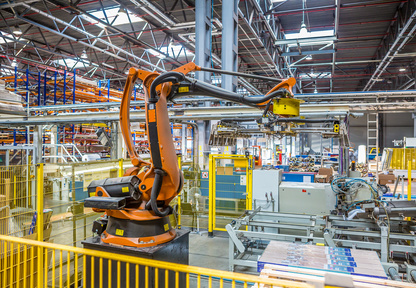
June 22, 2018
According to the Wall Street Journal, robots are taking on pharmaceuticals and food preparation. In pharmaceuticals, companies like Eli Lilly and GlaxoSmithKline are investing heavily in automation to radically change the process of drug discovery. If robots can handle thousands of samples around the clock, although costs will decrease or be reallocated to more valuable tasks, these results pale in comparison with the vast opportunity to develop drugs quicker! Are you radically re-thinking and innovating with speed in mind?

Meanwhile, a burger joint will open in San Francisco that makes $6 burgers entirely by robot. Creator is betting that robots can create burgers more efficiently and better (with techniques borrowed from Michelin-star chefs) than humans. Now the question will become – when the robot curious wears off, will people frequent a robot run burger shop? Regardless, the question really becomes – are you considering whether robots or automation might benefit your customers and business value?
What Should We Consider and/or What Impacts Could Arise?
As much as we warn our clients not to get “too” carried away with robots and technology (as it is easy to chase these ideas down a rabbit hole leading nowhere), it is certainly worthwhile to think about the strategic use of technology as it relates to innovation, providing a superior customer experience and in improving performance. If it fits with your strategy, doesn’t distract from your priorities (or preferably compliments and enhances them) and generates a return on investment, why wouldn’t you consider every option?
One client leveraged the use of robots (designed uniquely for them by internal expertise) so that they could run a critical operation around-the-clock. They couldn’t find employees with the appropriate skills to run more than first shift and overtime and were constantly struggling to keep up with orders. Once the robot got up and running, the bottleneck was virtually eliminated and customers received what they needed when they needed it. The people on first shift took on the complex tasks, set the robots up to run at night and remained extremely valuable (even more so). Have you thought about these type of unique innovations to propel your business? We’ll be starting a new video and interview series, “Innovation: Fast-tracking growth and profits” shortly. We’d love to hear about your suggestions and innovations.



